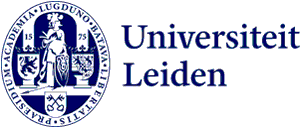
Investigating Caribbean migrations with a Vidi grant: ‘With isotope analysis we can look at individual behaviors and long term patterns’
Archaeologist Jason Laffoon was awarded an NWO Vidi grant for an innovative investigation into ancient migrations in the western Caribbean. The innovative character of this research project lies in the wide-scale application of isotope analysis and isotope mapping. ‘We aim at further developing methods that help identify and track ancient migrants and their origins.’
An isotope passport
The cliché that we are what we eat and drink certainly is true when you look at isotopes. Growing up, your body will preserve the isotope signals from the things you consume. Since these, at least in the past, are usually produced locally, your body contains an isotope passport of the place where you grew up. This is where Laffoon comes in. ‘In this Vidi project we are going to investigate five different isotopes embedded in human skeletal remains. These isotopes provide direct evidence for migrations.’
While the technique itself is not new, this method has not been applied to the Western Caribbean at such a scale. ‘We build on previous work applying strontium isotope analysis, which was fairly effective. Only using one proxy, however, makes tracking origins not always possible,’ Laffoon explains. ‘One isotope proxy might eliminate 60 percent of the map for example, while five different ones can narrow down the place of origin down to 5% or better.’ Here lies the innovative character. ‘We hope to get this approach to work effectively and then apply it to any region in the world.’

Long term patterns
In his project Laffoon focuses on the precolonial indigenous occupation of the Caribbean. ‘This period can be very long for some islands, like in the case of Cuba several thousands of years. While some of the other islands have only been inhabited for some 1200 years.’ One of the questions the project might answer is where those migrants came from. ‘We want to look at the long term patterns. Do we, for example, see continuous waves of migrations?’

Legacy collections
The human skeletal materials that will be analyzed in this project have already been excavated. ‘We will collect samples of legacy collections that have already underwent osteological and genetic analysis. With the isotope analysis we want to add another piece to the puzzle.’ The aim is to look at 300 individual skeletons at least.
Importance of migration
Laffoon hopes to test hypothesis on the distances travelled in migrations in the ancient Caribbean. ‘We want to explore the importance of migration. Nowadays it is often seen as quite a big action to undertake, and as a social problem. Yet we do not really have a good understanding about how that worked in the past. Personally I think that migration has always been around, playing an important role and making an impact on human society.’

Team science
The project will employ a PhD student as well as a research assistant. ‘I am very grateful that I got the grant,’ Laffoon emphasizes. ‘While these Vidis are individual awards, it is important to note that I got help from many people along the way. The research support staff was very helpful in the application process for example. This is team science.’
